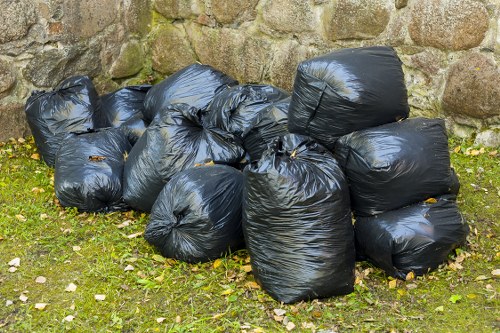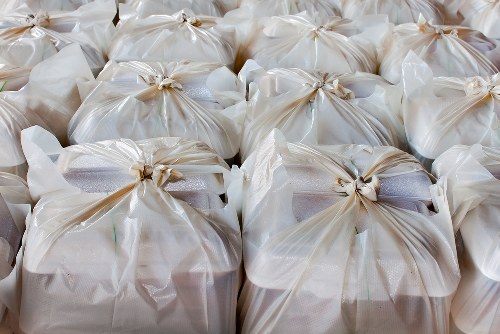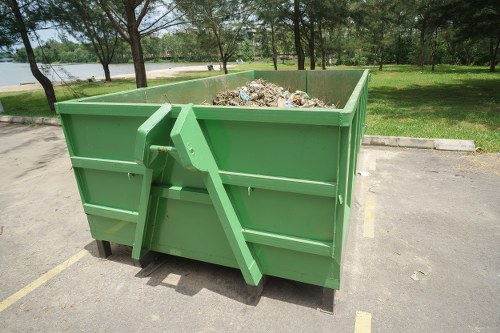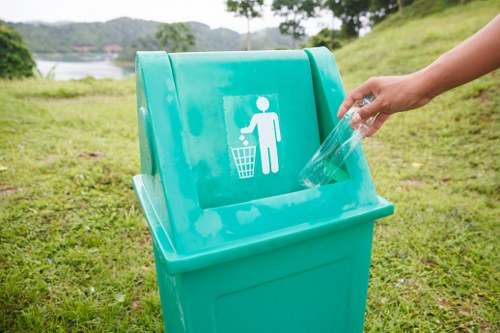Builders Waste Poplar

Builders Waste Poplar is a topic that touches on many aspects of construction, environment, and waste management. In our community of Poplar, the handling of building waste is both a challenge and an opportunity for sustainable growth. The remnants of construction, from old wood and concrete to steel reinforcements, can be a burden if not properly managed. At the same time, these materials have the potential to be repurposed, recycled, or reused in innovative ways that benefit both the economy and the environment.
In recent years, awareness about construction debris and its impact on local ecosystems has increased. Builders waste in Poplar is managed through a combination of regulations, recycling programs, and community initiatives. Residents, builders, and environmental advocates are united by the desire to reduce landfill overflow and minimize the environmental footprint associated with construction projects. This article examines the various methods and policies implemented in Poplar to tackle builders waste, helping readers understand the importance of sustainability and responsible disposal practices.
One of the key aspects of effective builders waste management in Poplar is collaboration. Local governments, construction companies, and community organizations work together to ensure that waste is not only disposed of but also transformed into valuable resources. This comprehensive approach aims to conserve the environment, reduce carbon emissions, and promote recycling practices. As interest in green building methods grows and more eco-friendly technologies emerge, Poplar is at the forefront of exploring practical solutions for the waste produced by builders in our region.
Understanding Builders Waste in Poplar

The term builders waste in Poplar is used to describe the heterogeneous mix of materials generated during construction, demolition, or renovation. These may include concrete rubble, wood scraps, metal, drywall, and other construction leftovers. Understanding these components is essential not only for compliance with local regulations but also for developing effective recycling strategies. In Poplar, categorizing waste helps in allocating resources for recycling and proper disposal. This systematic approach is key to reducing environmental impact and fostering a circular economy.
When discussing builders waste, it is important to highlight the concept of sustainable waste management, which entails sorting, reusing, and recycling materials. Many construction companies now incorporate waste reduction policies into their project planning. This involves minimizing waste generation through improved design practices, choosing materials that are easier to recycle, and partnering with specialized recycling firms. Such practices are at the heart of Poplar’s commitment to environmental stewardship and serve as a model for other communities facing similar challenges.
The city’s regulations also promote the safe disposal of hazardous building materials and encourage the recovery of valuable metals and raw materials. Public awareness campaigns and educational programs have further emphasized the importance of proper waste management. The synergy between industry, local government, and the public in managing builders waste has led to innovative solutions that not only reduce landfill use but also create revenue streams by repurposing materials. In summary, understanding and categorizing builders waste is vital for designing tailored recycling programs that meet the needs of Poplar’s evolving construction industry.
Benefits and Environmental Impact of Recycling Builders Waste

The recycling of builders waste in Poplar offers numerous environmental benefits that extend from local communities to the global ecosystem. Recycling helps in conserving natural resources by reducing the need for new raw materials, thereby lowering the overall carbon footprint of construction projects. By reusing materials like steel, concrete, and wood from builders waste, the industry can significantly lessen the dependence on environmentally taxing extraction and production processes. This circular economy approach not only reduces pollution but also generates economic gains through the creation of recycled materials markets.
Another advantage is the reduction in construction and demolition waste that ends up in landfills. Landfills contribute significantly to soil and water contamination, and curtailing the volume of builders waste can mitigate these risks. In Poplar, local initiatives have led to dedicated recycling facilities that specialize in processing construction waste. These facilities create jobs, support local businesses, and contribute to a cleaner, healthier community. Recycling initiatives transform what would be environmental liabilities into valuable resources that support both sustainable development and economic resilience.
Moreover, recycling builders waste has a direct impact on the community’s public health and overall quality of life. Fewer waste materials in landfills mean reduced emissions of harmful toxins, which in turn results in improved air quality and reduced risks of respiratory issues among residents. The proactive strategy adopted by Poplar exemplifies how environmental and economic interests can align. In this way, the thoughtful management of builders waste serves as a cornerstone for sustainable urban development, combining technological innovation with community commitment and regulatory support.
Handling and Disposal Methods in Poplar

Proper handling and disposal techniques are essential for managing the diverse range of materials generated as builders waste in Poplar. Local experts emphasize the use of modern waste sorting and recycling facilities that can efficiently separate recyclable materials from non-recyclables. One common approach is to implement on-site sorting during demolition or construction, which allows hazardous or contaminated materials to be identified and separated from recyclable ones. This careful segregation helps in maximizing the usefulness of the waste and reducing disposal costs.
In addition to on-site sorting, builders in Poplar are encouraged to invest in sustainable construction practices. For instance, modular designs, prefabricated building components, and eco-friendly materials all contribute to minimizing waste from the outset. Disposal methods also include treatment processes that break down large pieces of waste into smaller, more manageable components. Recycling protocols adopted by local governments ensure that waste management is conducted in a way that minimizes environmental degradation while maximizing resource recovery. The implementation of these methods has been instrumental in establishing Poplar as a leader in sustainable construction practices.
Several disposal methods are in operation, ranging from standard landfill dumping to advanced recycling centers that process diverse types of building debris. A key element in these initiatives is the education of construction crews and subcontractors about the importance of waste minimization. Government agencies, working in tandem with private recycling companies, have set up incentives and subsidies to encourage sustainable practices. The focus remains on transforming potential waste into resources, thus reducing environmental strain and providing a replicable model for other communities committed to comprehensive waste management solutions.
Local Relevance and Nearby Areas of Poplar

Poplar is strategically located near several communities, each with its own unique features and challenges relating to builders waste management. In this section, we discuss the local relevance of recycling and waste management practices in Poplar and list the closest areas that share similar concerns. These regions exhibit a strong commitment to sustainability, and many have established their own systems for managing construction waste. The synergy among these areas, including joint initiatives and sharing of best practices, makes for a robust network dedicated to environmental stewardship.
Among the closest areas are Ashcroft, known for its rich history and commitment to green energy; Penticton, which boasts innovative recycling facilities and a vibrant community; and Vernon, a city that has integrated waste management into its urban planning. Other notable areas include Kelowna, Kamloops, Salmon Arm, Hope, Chilliwack, Abbotsford, Mission, and Surrey. Each of these communities contributes to a broader regional effort to manage builders waste more effectively. They employ strategies such as on-site sorting and advanced recycling techniques that are similar to those being implemented in Poplar.
These nearby regions not only offer practical examples of builders waste management but also represent potential partners for collaborative environmental programs. For instance, Kelowna’s expertise in recycling can help influence practices in Poplar, while Kamloops has developed a successful waste-to-energy initiative that can be emulated locally. The shared focus on sustainable growth and efficient waste disposal creates a network of support and innovation across the region. By recognizing the unique features and challenges of each nearby area, Poplar continues to evolve as a community that champions both economic development and environmental responsibility.
Innovative Practices and Future Trends
As the field of builders waste management evolves, innovative practices are emerging in Poplar to push the industry forward. These practices include the integration of technology in waste tracking and the use of artificial intelligence to maximize recycling efficiency. Advanced sensors and robotic sorting systems are beginning to play a vital role in identifying materials quickly and accurately, ensuring that recyclable components are not mistakenly sent to landfills. This blend of technology and sustainability sets a groundbreaking example for how modern communities can address traditional waste challenges.
Future trends in waste management are leaning towards the development of fully integrated waste-to-resource systems. In Poplar, local companies and municipal governments are exploring partnerships with tech startups to create digital platforms that streamline the entire waste disposal process, from on-site sorting to final recycling. These digital tools are expected to offer real-time data on waste streams, which can lead to smarter decisions about resource allocation and environmental policy. Such advancements demonstrate the potential for a seamless connection between technology and ecological accountability, paving the way for a more sustainable future in construction practices.
Alongside these technological innovations, community engagement remains a cornerstone of future waste management trends. Educational campaigns, workshops, and public-private partnerships are being implemented to raise awareness about the benefits of recycling builders waste. These initiatives not only empower residents to participate actively in environmental conservation but also encourage local industries to adopt more sustainable practices. By fostering a culture where every stakeholder understands the importance of recycling, Poplar is positioning itself at the forefront of a global movement towards a more sustainable and eco-conscious society.
Frequently Asked Questions About Builders Waste in Poplar
- What is builders waste in Poplar?
Builders waste in Poplar refers to the variety of materials generated during construction, demolition, or renovation projects. These include concrete, wood, metal, and other substances that can be repurposed, recycled, or disposed of responsibly. - How does Poplar manage construction debris?
Poplar uses a combination of sorting, recycling, and safe disposal methods. Local recycling facilities, strict regulatory guidelines, and community involvement ensure that demolition and construction waste is processed in an environmentally friendly manner. - Why is recycling builders waste important?
Recycling builders waste helps conserve natural resources, reduces environmental pollution, and lowers the carbon footprint associated with new material extraction. It also creates economic opportunities through the development of recycling markets. - What innovative techniques are being used in Poplar for waste management?
Innovative techniques in Poplar include the use of robotics, artificial intelligence for sorting waste, digital tracking systems, and waste-to-energy conversion processes. These technologies help optimize recycling rates and reduce overall waste. - Are there other nearby areas following similar practices?
Yes, many nearby regions such as Ashcroft, Penticton, Vernon, Kelowna, Kamloops, Salmon Arm, Hope, Chilliwack, Abbotsford, Mission, and Surrey are implementing similar sustainable waste management practices, often sharing expertise and innovations with Poplar.
